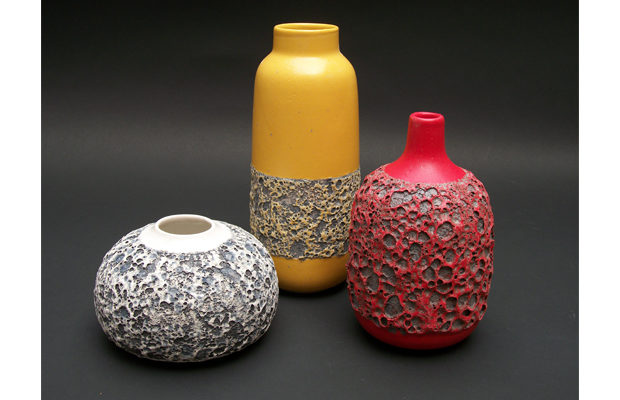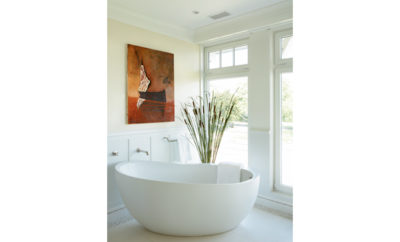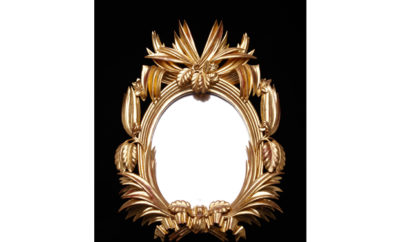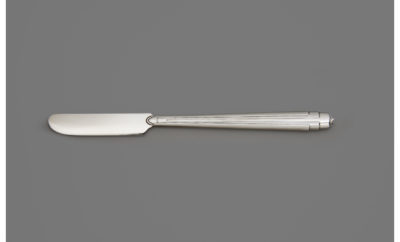
Feature
Contemporary Clay

An untitled 2010 piece by Christine McHorse.

A trio of 2010 “Heath Hybrid” vases by Silverman
American studio ceramics have come a long way since the late nineteenth century when the “Saturday Evening Girls” decorated children’s tableware by hand in their Boston workroom at the Paul Revere Pottery. Just as the vogue for arts and crafts style was on the decline, European modernism gave American design a jolt of creative energy, introducing the clean bold forms of Bauhaus tableware to a population that was beginning to tire of lily-pad and sunset motifs and the like.
Following on the heels of the Bauhaus style came a new appreciation for the understated forms of Japanese and Korean folk pottery and their luminous high-fire glazes, and for Native American pottery made from gravity-defying coils and incised with intricate geometric patterns. All these varied influences conspired to create a new, distinctly American, voice in studio ceramics in the early and middle decades of the twentieth century. Today, the pioneers of this era are coming into their own on the secondary market. “Gertrud and Otto Natzlers are about as blue-chip as they come in modern ceramics,” says appraiser Elizabeth Essner, a postwar studio craft specialist formerly engaged by New Jersey’s Rago Arts and Auction Center. “Their pieces have achieved some staggering auction prices. A Natzler vase sold for $252,000 in 2006. Their work has remarkably broad appeal. Everyone, from seasoned collectors to first-time buyers, is captivated by the grace of Gertrud’s forms and the wizardry of Otto’s glazes.”
Recently gallerists Garth Clark and Mark Del Vecchio have teamed up with Cowan’s Auctions, and their first joint sale in 2010 broke the record for works by Peter Voulkos, the ceramist often credited with raising pottery to the level of fine art in the 1960s and 1970s. Thanks to their expanding presence in museums and galleries, a new generation of studio potters is riding the tide of interest in the work of the mid-century masters. Here we discuss three of the most promising contemporary talents.
New York-born and Connecticut-bred Adam Silverman is the studio director of Heath Ceramics, the venerable artisanal pottery factory in Sausalito, California, founded by Edith Heath in 1948. Silverman has helped Heath reestablish its aesthetic identity under the leadership of its visionary new owners, Robin Petravic and Catherine Bailey, who bought the company in 2003. Silverman studied architecture at the Rhode Island School of Design, and as a student was drawn to the work of Le Corbusier and Richard Serra, captivated by their simple, powerful forms. He was also an admirer of painters such as Francis Bacon and Paul Klee, who used paint on canvas in a tactile, almost three-dimensional way.
Silverman now applies these principles to his pots, which have relatively basic forms but wear their complex and highly textured glazes like fabulous colorful overcoats. If Silverman has stylistic ancestors in American studio ceramics, they are surely the Natzlers, who left Austria for California in the late 1930s. “Gertrud threw clay like an angel,” Silverman says, making her pots ideal canvases for Otto’s highly original, jewel-like glazes. Silverman makes one-of-a-kind pots in his Los Angeles studio, and also designs pots for production, marrying the aesthetic appeal of his wheel-thrown originals with the production power of Heath’s large team of artisans. He appreciates the multi-generational appeal of Heath, noting that the audience for their wares ranges from newlyweds in their twenties, registering for their first tableware set, to people in their eighties who began buying Heath pots back when the factory first opened.
Born in Germany, Maren Kloppmann has made tableware, wall sculptures, and pillow-like vessels in her Minneapolis studio. From an early age she was inspired by the “Nordic, modernist designs” in ceramics and glass she saw as a student in the 1970s when she traveled regularly to Scandinavia. Ironically it wasn’t until she settled in the United States that she fell in love with the work of the highly revered German-born potter Ruth Duckworth, who had also immigrated here. Like many artists who work in clay, Duckworth, who was originally trained as a stone carver, began making pots on the wheel, then began exploring how her forms could be translated into wall sculptures. The arcs and curves of wheel-thrown pots appear in almost all of Duckworth’s sculptures, from the small figures that resemble ancient Cycladic forms to the sensuous wall plaques that flirt with three-dimensionality.
Kloppmann began to explore the idea of the sculptural vessel in graduate school at the University of Minnesota. After studying the work of sculptors Isamu Noguchi and Constantin Brancusi, she developed a greater appreciation for Duckworth’s style, which she describes as being simultaneously “intimate and monumental.” The combination of small-scale work on the wheel with the architectural possibilities of clay has allowed Kloppmann to find a niche as a maker of both tableware and sculpture. Her recent commissions include a large installation for the Westin Hotel in Minneapolis, mounted in 2008, and a more intimate piece designed this year for the Plymouth Congregational Church, also in Minneapolis, all of which were made in her downtown studio, alongside the modernist pots she creates by hand for a loyal following. Her work can be found at venues across the United States, including Gallery Gen in Long Island City, New York, Harvey Meadows Gallery in Aspen, Colorado, and Meier/Ferrer: Studio Projects in Los Angeles.
Anyone who has spent time in the American Southwest will attest to the increasing appetite for Native American decorative arts and sculpture. Garth Clark and Mark Del Vecchio, who have recently relocated from New York to New Mexico, have trained the eyes of a new generation of collectors in Santa Fe, where the highly successful Sculptural Objects and Functional Art [SOFA] West is now in its third year. Pueblo ceramic traditions in the Southwest were first widely popularized by the work of Maria and Julian Martinez. Charles King, a Scottsdale, Arizona, gallery owner, credits Martinez with paving the way for native ceramists to conceive of their work as sculpture, expanding on the long tradition of functionalism. Martinez made pots in the micaceous “black on black” pottery tradition of northern New Mexico. Clay in this region is rich in silver and gold mica flakes, and as a result, the pottery made from it can withstand temperature changes, making them ideal cooking vessels. According to Clark, these pots were made by various tribes in the region beginning about 1500 and were traded among both natives and Spanish colonists.
Martinez’s work gained national fame at various world’s fairs following her collaboration with archaeologist Edgar Lee Hewett, who hired her in 1908 to re-create Neolithic pots from the fragments he found near Taos, New Mexico. Christine McHorse is probably the most widely regarded artist working in the micaceous tradition today. McHorse is a Navajo who married into a Taos Pueblo family, and learned to work with micaceous clay from her husband’s grandmother, Lena Archuleta. T
he dark, subtly metallic surfaces of her vessels place them clearly in the Pueblo tradition, but McHorse has taken the method to a new place by experimenting with sculptural flourishes at the tops of her vessels (which are sometimes closed, making them purely sculptural). McHorse studied at the Institute of American Indian Arts in Santa Fe in the 1960s and since then her work has been widely collected and exhibited. Examples can be found at the Denver Museum of Natural History, the Museum of New Mexico, the Navajo Nation Museum, and the Smithsonian. Garth Clark is quick to note that for all the traditional qualities her work exhibits, McHorse’s purview is broad. At the Micaceous Pottery Artists Convocation that took place at the Indian Arts Research Center, Santa Fe, in 1994, in a conversation about the problem of Western and intra-tribal “borrowing” of styles and motifs, McHorse remarked, “I wouldn’t want anyone to place restrictions on me, so I wouldn’t want to place restrictions on anyone else. I draw my inspiration from the whole world.” Well said.












